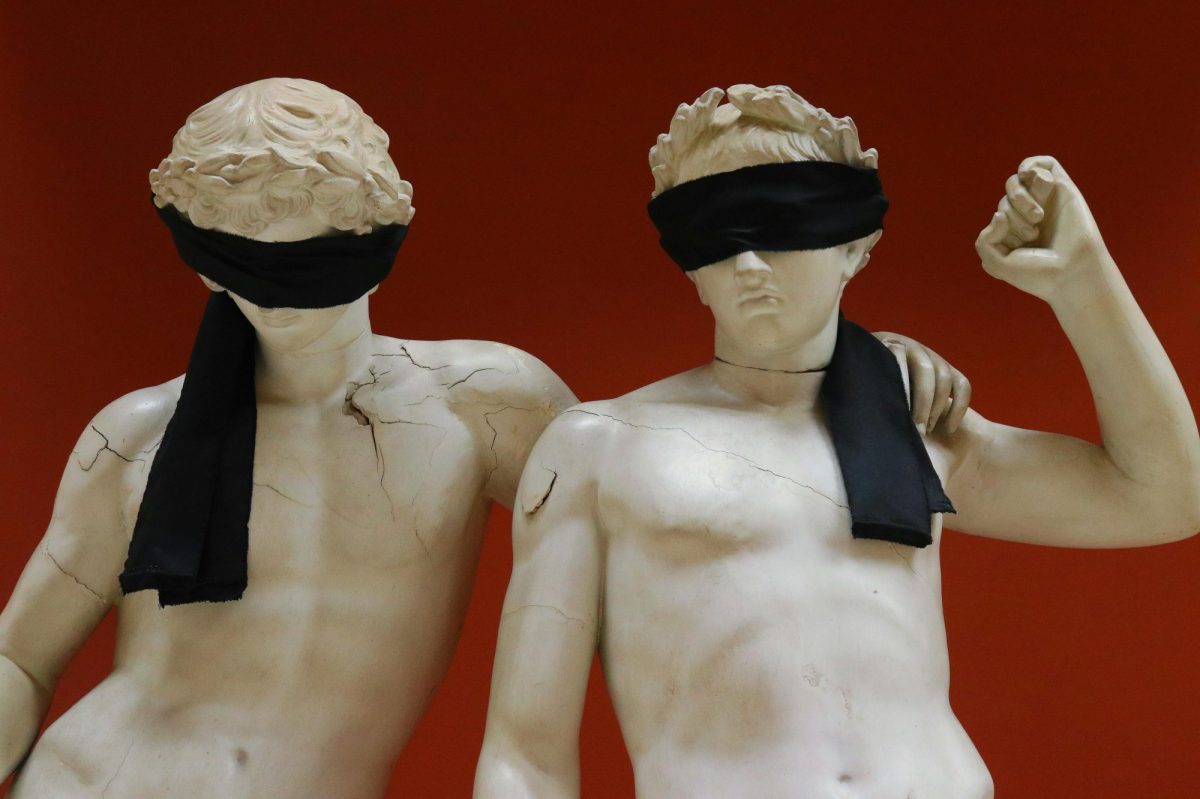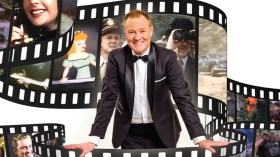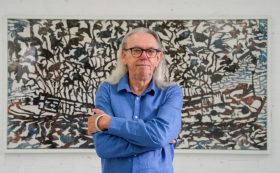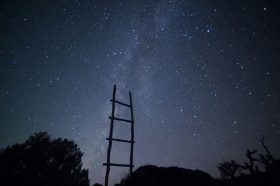In the same week of February this year, the Board of Creative Australia announced and rescinded the appointment of Khaled Sabsabi and curator Michael Dagostino as Australia’s representatives to Venice Biennale 2026. Monash University recently announced an “indefinite postponement” of the exhibition, Flat Earth, featuring Sabsabi. These actions sit adjacent to the censorship of artists at State Library of Victoria, Melbourne Symphony Orchestra and National Gallery of Australia.
Last Monday 7 April, the first public forum dealing with the Venice Biennale decision – and the subsequent intervention by Monash University – was held at Melbourne’s Greek Centre, organised by Memo magazine, the journal that initiated a petition calling out Creative Australia’s actions as censorship; it has 4400-plus signatures. These attacks on Khaled Sabsabi were discussed in the context of artistic freedom, censorship and institutional risk.
In this article:
Dissonance
It was clear there was a dissonance between the arts sector’s perceptions and expectations of these institutions and their real-world behaviours. To combat the censorship, to support artists and to deal with future instances, it’s helpful to unpack the reasons for this dissonance.
Let’s start with Monash University.
Today, many universities operate like manufacturing and retail outlets for the product of education. They have an interest in research and pedagogy only if it serves the bottom line. Profit and risk are their principal operating imperatives. This has been the case for more than a decade.
Monash University would have concluded the political and financial risks of going forward with the exhibition could make it less competitive in the higher education marketplace due to brand risk. The institution’s values and decision-making are consistent with a tertiary education sector that has been comprehensively neo-liberalised. In the sphere of profit, corporatism and market primacy, the University made a logical decision.
The outrage from the arts sector, academics, alumni and the public belongs to another time and another sphere: that of a 20th century configuration of a university as a public institution with research and pedagogical imperatives underwriting its raison d’être. This university barely exists today.

Similarly, Creative Australia.
Creative Australia (formerly Australia Council for the Arts) is not and has not been for many years an advocate of the arts or artists. This view has been underscored many times by multiple figures in the public domain, including at last week’s forum.
Its behaviour in this instance is the latest in a long line of evidence encompassing its abnegation of responsibilities during the Brandis saga, its treatment of performance artist, Casey Jenkins and the near-negligible direct funding it offers artists. Creative Australia behaves more like an advertising agency or a marketing outfit for which risk is front-and-centre of mind. A colleague recently described it as a company that demands exceptional buy-in from employees to this mission, a modern business imperative. In a welcome development, staff are pushing back. It’s been a tough couple of months for them, too.
Last week, Khaled Sabsabi conducted public interviews for the first time. They were difficult reading and listening given the personal cost of Creative Australia’s decision. His explanation of the contentious artworks was clear and reasonable and his plans for the Venice Biennale fit perfectly with the conflicted world we all inhabit, no doubt a key reason he was selected in the first place. A Lebanese-Australian, Muslim multimedia artist and follower of Sufism, he stated he does “not support or endorse any form of terrorism or racism or antisemitism or Islamophobia”.
The Board of Creative Australia’s decision to rescind Sabsabi’s appointment is a consequence of pressure – both perceived and actual. It was triggered by a report in NewsCorp media and a single question in Parliament from a Coalition politician against a highly volatile local-political backdrop to the prosecution of the Israel-Hamas war in Gaza and the devastating scale of Palestinian casualties. At Monday’s forum, the decision was described as racist, quoting the excuse of ‘social cohesion’ as a brightly coloured flag waving in that direction. For the record, Creative Australia’s mission does not include social cohesion, so it’s providing justification for its actions outside its legislated remit. By its own actions, it is no longer operating as a national arts agency nor perceives itself as such.
Monash University and Creative Australia are both public institutions funded by government, but they have behaved in opposition to how their respective sectors expect them to behave – or, in the case of Creative Australia, how their governance structures demand they behave.
How do we deal with dissonance on this level, and turn that into a course of action?
Strategy
Let’s stick with Creative Australia. To deal with Creative Australia as an arts agency operating for the benefit of the arts sector and the wider public is a mistake. We need to accept that it behaves more like a private company than a government agency. Or, to be more accurate, it conflates some of the very worst aspects of the private and the public entity in its operations. If we deal with the agency in the way it operates, behaves (and clearly sees itself) – as a corporate entity – then our tactics and strategy may bear fruit more quickly.
In this configuration, taxpayer-citizens equate with shareholders. The arts sector – the principal beneficiary of Creative Australia’s operations – is the majority shareholder. Through our investment as taxpayers, we provide funds for the company’s operations including the Executive and Board members’ wages and fees. It is our responsibility to hold them to account for their actions.
We need to call upon the CEO and Board to reinstate the artistic team or resign for breaching a key operating principle in the company’s constitution – I article 11 (e) “to uphold and promote freedom of expression in the arts”. The actions of the CEO and the Board have brought the Creative Australia company into disrepute by causing a significant loss of the social and cultural capital on which its reputation – and by direct association ours as a sector and Australian culture more broadly – rests. This reputational damage is likely to result in less budget allocation, and that means diminished returns and investment capital for majority shareholders (us, the arts sector) and the general shareholder-population (taxpayer-citizens). It is beholden on the arts sector to act for the benefit of fellow shareholders that do not work in the arts, but whose lives are touched by them every day, thereby protecting society’s investment.
Read: What does ‘less is necessary’ look like?
Through this prism, it’s easier to read and understand the implications of the interplay of managerialism across the sectors. Current CEO, Adrian Collette AM, spent five years at Melbourne University in an executive leadership position (2013-2018), during which time it can be argued the neoliberal project was completed there.
His actions seem to mimic many of the corporate behaviours that connect the leadership of higher education and the arts in the public domain. To resist these behaviours, we need to recalibrate our strategies. For tactics on shareholder activism, we can do worse than reference Stephen Mayne and for a contemporary analysis on arts board behaviours, Kate Larsen has done a mountain of work worth reading.
Activism
A decade ago, the sector faced a similarly significant challenge when Arts Minister George Brandis ripped $100 million from what was then the Australia Council for the Arts and established a new fund under his purview. The grassroots collective Free the Arts was formed, advocated for a Senate Inquiry, and engineered the sacking of Brandis and the gradual return of funds. The episode redefined Australia’s culture wars.
Getting Brandis sacked was part of a strategy; it reset the battle on our terms. Spilling the Creative Australia Board would have the same effect. Free The Arts was predominantly run by independent artists and small-to-medium performing arts organisations. The push for justice for Khaled Sabsabi and Michael Dagostino understandably rises from the visual arts sector. For a genuine, sustained resistance to current and future censorship in the arts, we need to combine our forces and talents across the literary, performing and visual arts. For too long we’ve been persuaded by the neoliberal left and right that our art forms are in competition for funding and prominence. Our survival requires us to resist those formations and unite as a sector, to share responsibility and distribute power evenly. A positive, first step will be to demand of ourselves that we set aside our differences to assert the rule that no artist be censored.
If we don’t act now, the censorship of Australian artists will keep happening, again and again. Eventually, you will be next. That’s how it works. Regardless of race, gender, ability, ethnicity, religion. Censorship is agnostic. It answers only to power.





